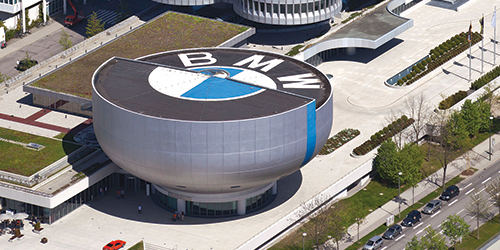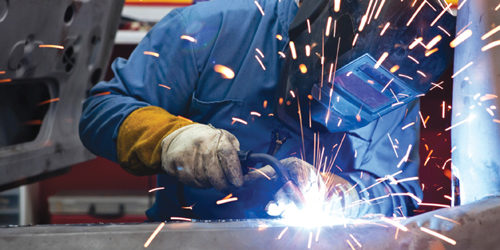
The famous German automobile maker is 100 years old this year and what better time to look back over the illustrious history of one of the worlds most successful car manufacturers.
BMW can trace its roots back to Karl Rapp and Gustav Otto. In 1916, the Flugmaschinenfabrik Gustav Otto company was merged with Bayerrische Flugzeug-Werke AG (BFW) at the governments behest. Elsewhere, in 1917, the Rapp Motorenwerke company became Bayerische Motoren Werke GmbH, which was duly converted into an AG (public limited company) in 1918. BMW AG subsequently transferred its engine construction operations - including the company and
brand names - to BFW in 1922. The date of BFW’s founding, March 7th 1916, has therefore gone down in history as the foundation date of BMW.
The company announced its first motorcycle, the R32, to great excitement in 1923. The basic concept of the original Motoread motel - a boxer engine with longitudinally positioned cylinders and shaft drive - continues to be employed in the their motorcycles to this day.
The company didn’t become an automobile manufacturer until 1929 when it purchased a company called Dixi that built Austin Sevens under licence and the BMW engineers progressively developed the car into 6-cylinder luxury cars and, in 1936, began production of the BMW 328 sports car.
During the war, and against the wishes of its Director Franz Josef Popp, BMW turned their attention to the development of aircraft and this stopped car development in its tracks.
After the war the Allies banned the company from making cars and it survived by making pots, pans and bicycles. This was largely pointless as the Allies had bombed much of their production facilities into rubble. In 1948, they restarted motorcycle production and it was not until 1952 that the company began building cars in earnest, with the BMW 501 luxury saloon and, to supplement the little income derived from cars, the company began building Isettas (better known as Bubble cars) under licence. With profits marginal the decision was taken to sell the company to Daimler-Benz until Herbert Quant became involved and took a controlling interest in the company and its future. As the margins increased, the company grew and eventually acquired the Rover Group and the licence to build cars under the Rolls Royce marque.
In the west, the Bristol Aeroplane Company (BAC) inspected the factory, and returned to Britain with plans for the 327 model and the six-cylinder engine as official war reparations. Bristol then employed BMW engineer Fritz Fiedler to lead their engine development team. In 1947, the newly formed Bristol Cars released their 400 coupé, a lengthened version of the BMW 327 that featured BMW’s double-kidney grille.
With a rapidly expanding reputation for producing fast luxury cars, BMW Motorsport was created in 1972 and won countless trophies and much of the racing technology found its way into their road cars. Warming to this theme, the company created BMW Technik where some of the best brains in the business, engineers, designers and technicians, were placed away from the everyday operation to be set free to develop the cars of tomorrow. The first major project was the Z1 Roadster, which started production in 1988.
The creation of a plant in the USA in 1989 underscored its position as a global player and is the current production plant for the Z3 and the X3, X4, X5 and X6 models for export across the globe.
Further evidence of the company’s roaring success was the outright purchase of the iconic British marque, Rolls Royce in 2002, which is now wholly owned by BMW. The cars are produced at the plant at Goodwood in West Sussex and sales have gone from strength to strength. The only left-over from the less than successful takeover of the doomed Rover Group in 1994 was the Mini, which is now an important part of the group. This gave the company entrance into the small car market and is still built in the UK.
One of the concept benchmarks of BMW was the launch of the X5. This was the first SUV that actually drove like a car and was the catalyst for the wave of such cars that followed from just about every manufacturer.
Bringing the story right up to date is the launch of the first all-electric BMW, the i3 followed by the barnstorming hybrid i8, that can reach 155mph and attain 62mph from standstill in 4.4 seconds.
If BMW’s vision for the future is as technologically advanced as their past, we can look forward to another 100 years of motoring innovation and evolution.






